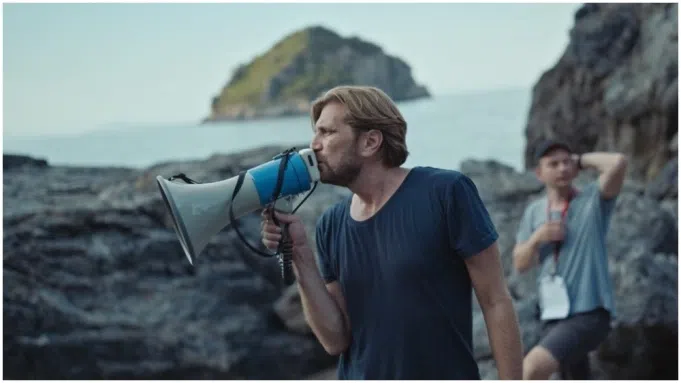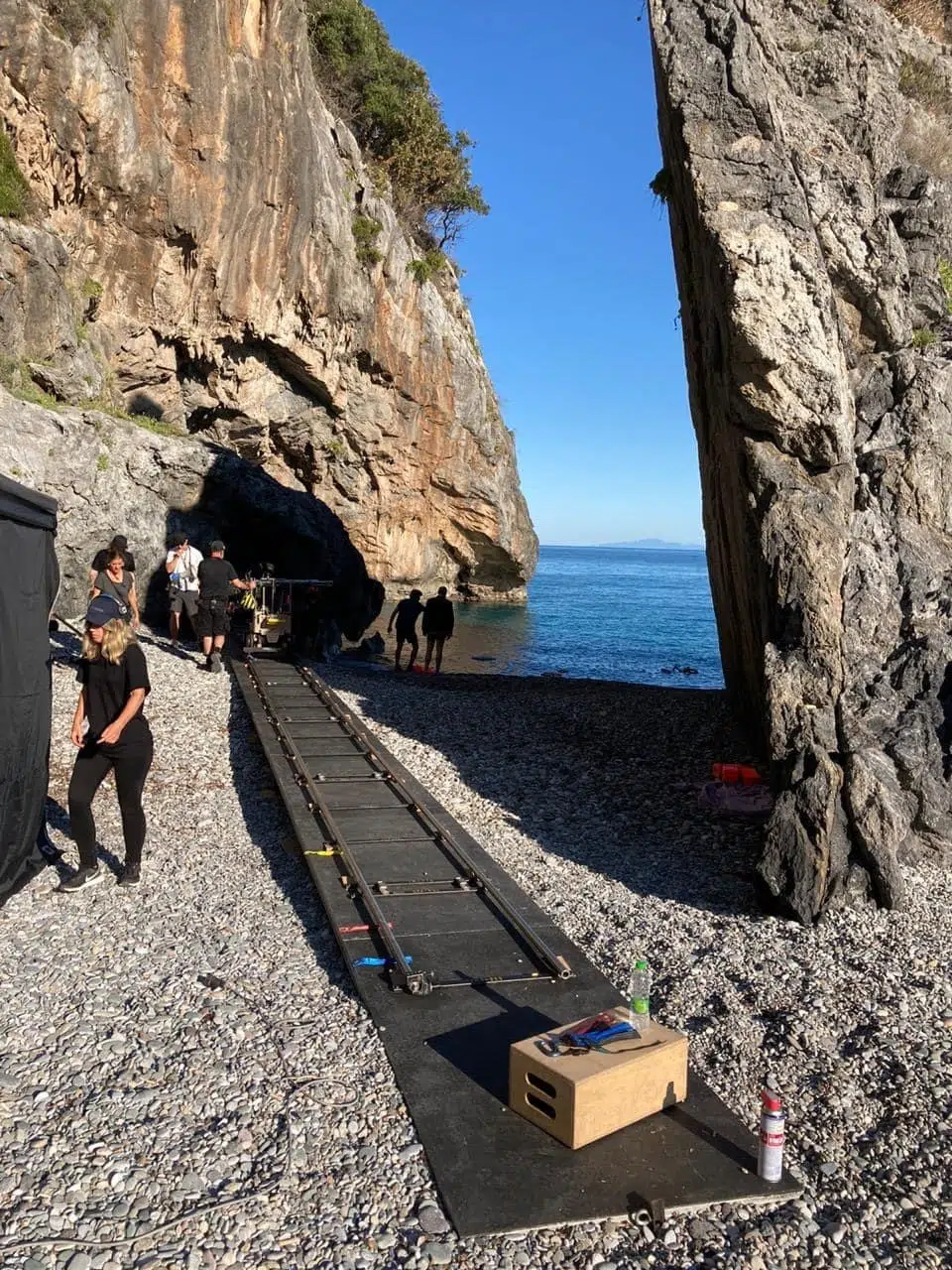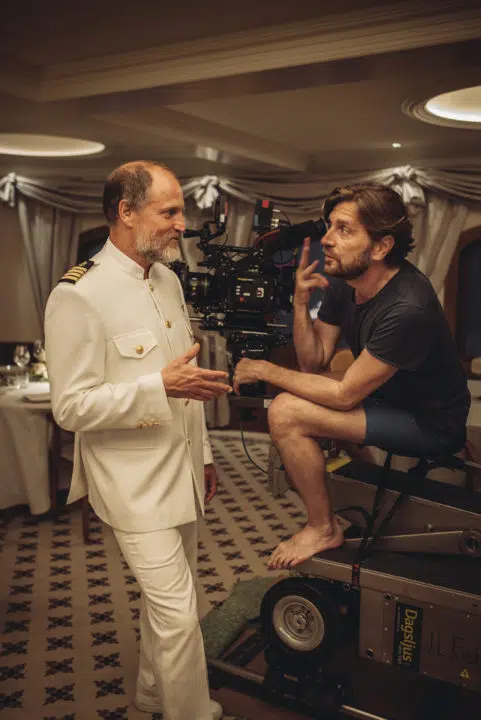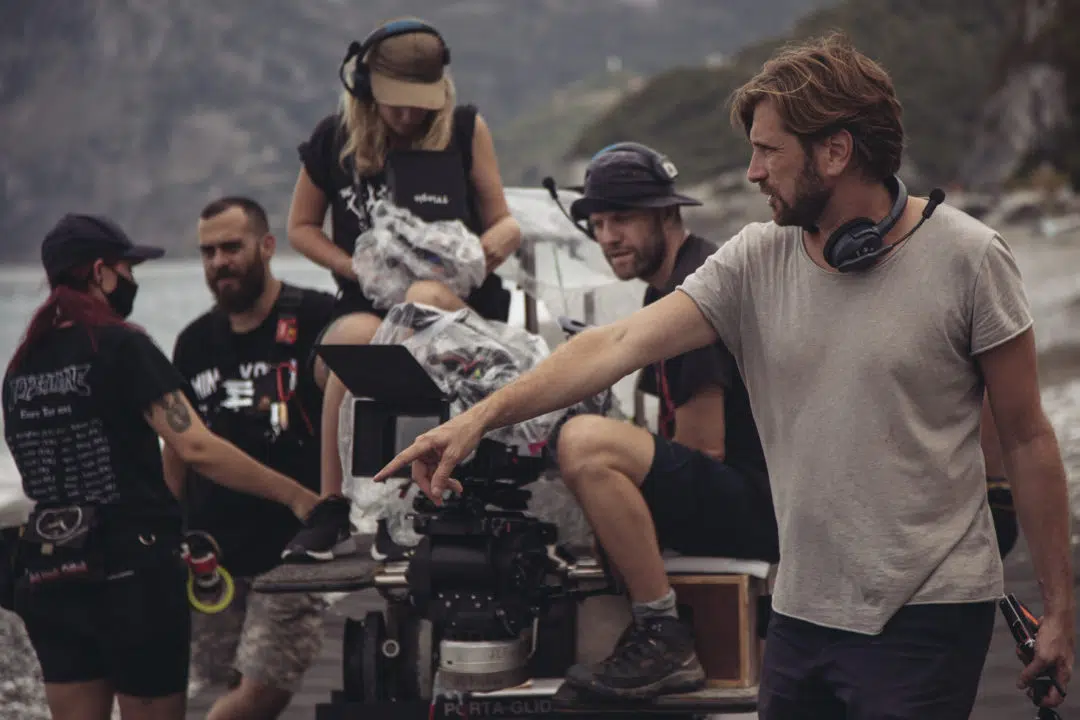
Ruben Ostlund, the Palme d’Or 2022 winner and Triangle of Sadness director-screenwriter, revealed that filming on Chiliadou Beach on the island of Evia in Greece was his “most joyful shooting ever.”
The exclusive interview between Ostlund and Greek Reporter‘s Paula Tsoni took place a few weeks prior to the film’s nomination for two Golden Globe 2023 Awards. Around that time, Triangle of Sadness triumphed at the European Film Academy Awards, and the filming location itself was also shortlisted for the Best European Film Location Award by the European Network of Film Commission.
In speaking to Greek Reporter during the 19th International Film Festival of Marrakech, Morocco, where he was invited for a conversation with the public, the acclaimed Swedish filmmaker shared details about his Greek filming experience.
He also spoke about his views on the use of original language in cinema, the plot of his next feature film that he is currently working on, and his thoughts on buying land in Greece.
Greek alternative to exotic filming destinations
Born in 1974 in Sweden, Gothenburg University alumnus Ruben Ostlund already possesses an enviable line-up of international film awards.
After his feature debut, The Guitar Mongoloid, won the FIPRESCI Prize at the Moscow International Film Festival in 2004, all his subsequent feature-length films premiered at the Cannes International Film Festival. There, in 2014, he obtained the Jury Prize for Force Majeure, which was also shortlisted for the Academy Awards.
Only three years later, Ostlund won his first Palme d’Or for The Square in 2017 before being presented with the prestigious award a second time for Triangle of Sadness in 2022.
Ostlund reveals in his interview with Greek Reporter that his team had “a fantastic shooting period in Greece” despite the hardships of shooting a feature length film while the COVID-19 pandemic was in full swing—something which he describes as “crazy stressful.”
The Swedish director discloses he had visited the country many times but had never experienced such a verdant environment similar to the one proposed by his Greek associate producer, Heretic, for Triangle of Sadness.
“We were thinking of shooting the film first in Thailand on a more sub-tropical kind of deserted island,” he says. “But then we got to see these images of Evia and the nature of Evia, which reminded me of South Africa or Cape Town with a wild type of nature, with these really high mountains…so, that was fantastic to experience that part of Greece.”

The next challenge pertained to a certain unusual particularity of Chiliadou Beach, where the team had chosen to do the shooting.
“We went scouting there and it was completely full of naked people and they told me it’s a nudist anarchist beach,” Ostlund recalls. “And how do you convince anarchists that they should leave their beach for us to shoot a movie? It was not an easy task. But the people of Chilliadou, the ones who live in the village, talked [to the nudists] really well and we managed to convince them that we needed to shoot on this beach.”
“That was the first part of going there and working,” he explains. “And then we were in this bubble working together and getting to know the villagers. And this was just a fantastic experience.”
Ostlund admits that he had never experienced such an enjoyable shooting before in his career, as it was almost “like a big studio to be there” on Chiliadou Beach.
He enjoyed a “great premiere” when he returned to the area in 2022, and plans on going back to Greece soon.
“I was this close to buying a piece of land on Chiliadou…We didn’t do it but maybe we will go back and have a look,” he confides.

On board Aristotle Onassis’ iconic yacht
When filming on Evia was completed, the Triangle of Sadness crew continued to Katakolon before heading over to the western coast of Greece. There, they filmed on the Christina O, the iconic yacht of the late Greek magnate Aristotle Onassis.
“We were looking at many different yachts [for filming], but I wanted a yacht which would remind one of colonial Europe in some way, so a little bit older, not the new ones, and it was Heretic that told us about the Christina O,” Ostlund notes. “Immediately when I saw it, I said, this is perfect. It is a beautiful boat, very expensive to rent. Then we realized we can use it as a symbol too, when we talked about the film.”
In a highly symbolic scene tied to an overarching message of the film, the yacht purportedly explodes. This is emblematic of the deglorification of the image of the beautiful and ultra-rich inherent in the film.
“I thought it was kind of fun that you have a film that is dealing with this kind of political topic, and to [virtually] blow up Onassis’ yacht in the film,” the director comments. “It was an interesting symbol value when you look at the kind of people that have been on that yacht.”

After all, he is convinced his sense of humor is quite similar to that of Greeks. “I love the kind of humor and attitude that the Greek people have, the ones that I have met there,” he maintains. “I think I share their humor, their political satirical approach to humor—at least the people that I met in the film industry. I love that.”
Original-language vs. English-language films
Triangle of Sadness was Ostlund’s first film to be entirely shot in the English language, but this doesn’t necessarily mean he will adopt English in each of his upcoming films, he cautions.
“I am not a fan of the domination of the Anglo-Saxon culture,” he opines. “I am not a fan of [the idea] that films coming from American and English culture are pushing out original-language films, if you say it like that. I think it’s important that you don’t have one language that is so dominant [in the industry].”
“The thing is that I live now in a relationship in which I speak English with my wife, [and] my son is brought up with English, [so] I am in an environment where I use English…for me it is natural to speak English,” he explains.
However, he says it is entirely possible that he “might…go back and make a film in a Scandinavian language.”
The next film that Ostlund is working on, The Entertainment System is Down, will also most probably be another English-language film, as it takes place on an international long-haul flight.
“It’s going to be one of these flights that lasts maybe seventeen hours, so I am thinking about the flight London to Sydney or something like that, and quite soon after take-off, the passengers get the news that the entertainment system is out,” he reveals.
“So we have modern human beings, who are so used to having this digital distraction that when their iPhones and their iPads are switched off, they are left out there in boredom and they have to make conversation,” Ostlund says.
A means to discuss our society
Towards the end of the interview with Greek Reporter, the two-time Palme d’Or winner is asked the risqué question. Would he ever one day consider producing a TV show much like other acclaimed filmmakers—including his compatriot Ingmar Bergman in the 1970s—have done in the past?
To this, he adamantly responds that he actually does not intend to do so at the moment and he “never will,” as he sees himself totally committed to cinema and the way it activates the audience.

“I think that cinema is so unique today because it’s one of the few places where we are actually watching images together,” he points out.
“And to sit and watch things together is a huge difference [from] being by yourself and sitting…alone…then I don’t have to reflect on what I am seeing—I’d be more like a zombie that is dopamined, scrolling,” he explains, in referring to our modern-day habit of watching videos on our phones or individual hand-held devices.
“So, cinema is activating the audience, and cinema is used to discussing our society,” he says. “It should be used to make the audience have to reflect and to provoke thoughts. I love cinema because of this.”
“I wasn’t a cineaste when I started film-making,” he discloses. “I was making ski films, [so] I came from action sports, making ski films. Today I am among the [top] fans of cinema, so I will never make any series.”
In concluding the interview, Ostlund makes a passionate plea and urges the people of Greece to safeguard their cinema culture: “So many nights I have been to open-air screenings, open-air cinemas in Greece, and I would like to say, take care of your cinema culture.”
*Written and directed by Ruben Ostlund, and starring Harris Dickinson, Charlbi Dean Kriek, Woody Harrelson, and Henrik Dorsin, Triangle of Sadness was produced by Philippe Bober and Erik Hemmendorff.
See all the latest news from Greece and the world at Greekreporter.com. Contact our newsroom to report an update or send your story, photos and videos. Follow GR on Google News and subscribe here to our daily email!



